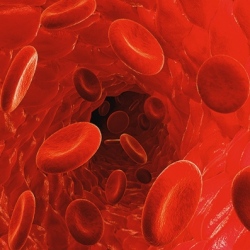
In the U.S. alone, there are around 17,000 preventable deaths each year due to untreated hemorrhagic shock. Someone loses a fatal amount of blood before they can reach the hospital more than 46 times per day. That’s why scientists have been working for many decades to come up with a substitute for two pressing problems.
Paramedics in battlefields and other challenging places need blood for emergency situations, and doctors need a plentiful supply of blood to transfuse into patients with sickle cell disease, many of whom have trouble finding blood donors.
To remedy the transfusion issue, researchers at the U.K.’s National Health Service are launching an ambitious trial this year to test whether blood made from stem cells will act the same way in the body as regular donated blood.
The NHS researchers were quick to point out that while blood substitutes can be a vital bridge to helping people in acute situations, blood donations will still be necessary in the future.
"It would be unfeasible to make blood in the lab for everyone," says Ash Toye, a biochemist at the University of Bristol who is working on the NHS study. "But we could make blood for people with very rare blood types or who have reacted to donated blood and so are difficult to match."
The other challenge, getting blood where it needs be, is also getting a boost this year. Allan Doctor, a researcher at Washington University in St. Louis, has created an artificial red blood cell that picks up oxygen in the lungs and transports it throughout the body. The cells are made from purified human hemoglobin, the oxygen-carrying component inside blood cells. Those cells are then coated with a special synthetic polymer.
The step of adding the synthetic polymer is important, Doctor notes. There have been a bunch of efforts in the past to create artificial substances that could carry oxygen from the lungs to the rest of the body. But some of the blood faltered because it would fail to release the oxygen. Or the uncoated hemoglobin caused adverse effects like heart attacks.
The synthetic polymer coating appears to solve these issues, according to Doctor. The coating is designed to respond to changes in blood pH, so the cells are programmed to pick up oxygen in the lungs, where pH is high, and let it go where in places with low oxygen, where pH is low.
The result is a product that can be freeze-dried as a powder and could be used on ships, battlefields, or even in space. The synthetic cells are immune silent, meaning they can be used with any blood type, and can be stored at room temperature and mixed with water, ready for immediate use anywhere.
